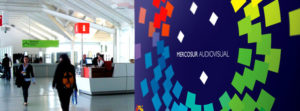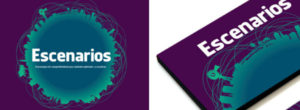The Gran Chaco (Great Chaco) is a region located at the south of the Amazonia, composed by Argentina, Paraguay, Bolivia and part of Brazil.
The Great Chaco brand was created as an initiative of the Gran Chaco Foundation, an NGO based in Formosa, Argentina, which is pioneer in supporting Aboriginal communities.
I travelled through the region and interviewed there the constitutive communities (Qom and Wichí) and people involved. After that, I designed as a symbol an strong, simple and easily recognizable without the need for explanations mark. That is a mark that can awake interesting interpretations by their audience.
In this mark, you can not only see the link to the Gran Chaco with the Palo Borracho (downpour), a typical local tree of the family Bombacaceae, but also with a hand and the feeling of openness and growth that give higher branches or fingers. In this way, the mark awakens associations with both nature as well as with the culture of those who inhabit the region.
Besides, the lowest dot of the brand, induces to see that the Gran Chaco is having something proper inside (an imaginary something contained by the downpour). This gives some mystery to the identity plus visual appeal.
The elegance of the typeface of the name, only seeks to balance the softness and sympathy of the symbol, looking to expand potential dialogue of the brand towards new markets, in order to penetrate crafts with the extra value that the Gran Chaco deserves.
Overall, the brand is expressed from a positive and friendly image, which makes axis on the good attributes of the Gran Chaco.
Regarding the political, economic and cultural sense of the brand, its purpose is helping to structure the different segments or fragments that today make up the Gran Chaco. Groups and Cooperatives, NGOs, associations, communities, states, etc. That is to show a common body and a shared space.
In this sense , if each constitutive part of the region assumes the symbol as its own, that would be an important advance, since it would shows both internally and externally a common denominator among all .
In strategic terms, for a maximum capitalization of the brand, the colours, letters and symbol have to be accepted and used for all to achieve a stable representation. However and as mentioned, the only popular acceptance of the symbol would be a contribution that will encourage further .actions. As shown in the example, the mark may also be used with different colours, with different fonts, or with the addition of other taglines, where diversity does not conspire against a basic unity.
In operational terms, the mark is intended to function as an appellation of origin of goods, stimulus to tourism, merchandising, as signalling, quality label, etc.
Thus, the advantage for the region to materialize its identity in a brand is political: it provides a greater visibility for the region. It is economical: helps the local economy and also empower the institutional weight of the region. At the same time is cultural, since stimulates social integration, without leaving marginalized outside.
The brand can then be understood as an operation to stimulate the pride of belonging, enhancing the collective structure of the Gran Chaco.
Sebastian Guerrini, 2013








